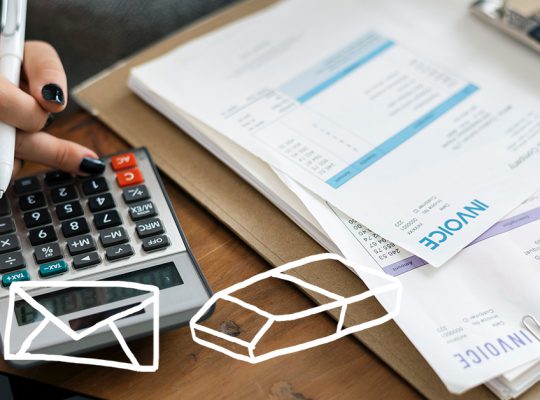12 Benefits of Investing in an RRSP
TurboTax Canada
February 10, 2025 | 7 Min Read
Updated for tax year 2025

Seriously, who doesn’t want to save on their tax bill? Think of an RRSP as a treat from the government to let you postpone your tax bill while offering ways to save your hard-earned money.
Whether you’re just starting to save or you have been planning your retirement for years, below are 12 reasons why your future self will thank you for investing in an RRSP.
Key Takeaways
- Investing in an RRSP can reduce your tax burden and grow your retirement savings.
- Grow your nest egg by taking advantage of compound interest, early contributions, and automated payments.
- RRSP contributions can be housed in a registered savings account which holds qualified investments like stocks, ETFs, mutual funds, bonds, GICs, and more. It’s flexible!
1. Your savings grow tax-free until withdrawn
Given that the average TSE 300 return is historically about 10% per year, any investment income (interest, dividends, or capital gains) earned within an RRSP is not subject to tax until the money is withdrawn from your RRSP. In other words, holding investments in a registered account will defer tax on those returns until you withdraw the funds.
2. You can carry forward RRSP contributions
Each year, you can contribute up to 18% of your gross income from the previous year, up to a maximum of $32,490 in 2025 (updated annually). But here’s a hot tip: there’s no obligation to deduct your RRSP contributions every single year.
Instead, your RRSP contributions can be carried forward and applied to a future tax year. In fact, you might even want to hold off claiming RRSP deductions until you’re earning bigger bucks.
For example, let’s say you have some money to invest in your RRSP this year, but you’re already getting a tax refund. You also just got a raise, putting you into a higher tax bracket for next year’s taxes. You can decide to deduct your RRSP contribution on next year’s tax return by selecting to carry it forward in TurboTax.
3. You won’t lose your unused contribution room
With the RRSP, it’s not a “use ’em or lose ’em” situation. Your unused RRSP contribution room never expires (unlike those airline points you’ve racked up!).
For example, let’s say you have $20,000 in RRSP contribution room this year. You don’t make an RRSP contribution, so next year you will have that $20,000 plus an additional amount based on your earned income.
After you turn 71, your contribution room can only be used to contribute to a spousal RRSP for your younger spouse if they’re under 71.
4. You can split RRIF income with your spouse
You can split your RRIF income with a spouse or common-law partner when you file your tax return. This lets couples with different incomes share their money and reduce their taxes. Up to 50% of your RRIF income may be transferred to your spouse.
For example, let’s say Maya contributed to her RRSP for years, and now that she’s over 71, she receives payments from her RRIF. Her wife Yasmin, who just turned 65, only made minimal RRSP contributions, so her pension income is much lower than Maya’s.
Maya can opt to share her pension income with Yasmin when they file their taxes. That way, this can effectively reduce Maya’s income and increase Yasmin’s income.
5. You can save for your spouse’s retirement too
If one partner earns more, they can contribute to a Spousal RRSP to help close the wage gap between spouses. Basically, the higher-earning spouse can contribute to the lower-earning spouse’s RRSP while claiming the tax deduction on their taxes. It’s a smart strategy to help save on taxes while still planning for a secure retirement for both spouses.
As long as you don’t withdraw the funds within three years of making a contribution, your spouse will only be taxed when they withdraw the money. When you contribute to your spouse’s RRSP, you must have the contribution room to receive the deduction.
Plus, using TurboTax makes the process simple, and if you need a bit of hand-holding, check out our video that explains how to claim a spousal RRSP contribution on your tax return.
6. You can tap into the Home Buyers’ Plan
Buying your first home? Take advantage of the Home Buyers’ Plan (HBP).
The Home Buyers’ Plan lets you use your RRSP money as a down payment on your house. You can withdraw up to $60,000 from your RRSPs (up to $120,000 for couples) without incurring any tax penalties. To qualify, you must have lived in your home (as your primary residence) within a year of the purchase.
The HBP must be repaid by continuing to make required RRSP contributions, otherwise, you will need to include the amount you should have repaid each year as part of your taxable income.
7. You can use the Life Long Learning Plan to go back to school
The Lifelong Learning Plan (LLP) is similar to the HBP, but it’s designed specifically for post-secondary education. You can withdraw up to $10,000 a year (up to $20,000 for couples) from your RRSPs without incurring any tax penalties. The most you can withdraw under the LLP is $20,000 per individual ($40,000 per couple).
Similar to the HBP, the LLP must be repaid. It’s like taking out a loan that must be paid back, otherwise it’ll be included in your income and you’ll be taxed.
8. You can earn compound interest over time
Compound interest is a magical thing. When you invest in RRSPs at an early age, your investment contributions have more time to earn interest and compound (or grow in value). The longer you hold your investments in an RRSP, the higher your potential to earn more money. This is because the interest earned and reinvested also earns interest.
Think of compound interest like a snowball rolling down a hill, growing larger as it packs more snow onto the ball. For example, a taxpayer who invests $1,000 per year in years 1 to 15 of the 30-year investment period would have more than double what a taxpayer investing the same $1,000 per year in years 16 to 30 instead.
TLDR: time is your BFF!
9. You can customize your RRSP portfolio
When you contribute to an RRSP, you can choose the financial manager as well as the type of investments you hold in your RRSP. This is a key difference between RRSPs and a Registered Pension Plan (RPP) (like what is provided by some employers).
An RRSP is like an umbrella that can hold any type of investment you can hold in a regular investment account as long as it’s a qualified investment. Think GICs, stocks, EFTs, you name it!
10. You can manage it yourself or hand it off to a pro
If you want to manage your RRSP yourself, you can open a self-directed RRSP investment account. You can choose your own investments and add or change investment products as needed.
If you don’t feel confident managing your RRSP on your own, there are financial advisors who can help build a diversified, RRSP portfolio that aligns with your financial goals.
11. You can contribute to your RRSP even if you’re semi-retired until you’re 71.
Even if you’re already retired, you can contribute to your RRSP until you turn 71. Once you hit that milestone, you have to close your RRSP and convert it to a Registered Retirement Income Fund (RRIF) or an annuity by December 31st of the year that you turn 71. If you’re 71 and still have contribution room, you can contribute to a spousal RRSP if your spouse is under 71.
A heads up: turning 71 also terminates any HBP and LLP associated with your RRSP, and amounts owing under those programs must be repaid or included in your income.
12. You can automate your savings to maximize your contributions
To make sure you’re contributing to your RRSP consistently, you can set up automatic RRSP contributions. In fact, your RRSP contributions can even come off of your paycheque directly, depending on your employer and the fund you invest in. Your money gets transferred to an RRSP each week.
Simply create an automatic deposit with a financial institution, determine the amount of money you want to save, and watch your portfolio grow over time!
The TurboTax calculator can help you to determine your ideal RRSP deduction. Divide the contribution over 12 months or 52 weeks to determine how much you want to invest weekly to maximize your RRSP. Just make sure you have contribution room by checking your most recent Notice of Assessment or signing in to CRA’s My Account.
The bottom line
RRSPs are a great way to save for retirement. This tax-advantaged account lets you save with pre-tax money and reduce your overall tax burden. Maximize your savings by understanding how RRSPs work, customizing your portfolio, taking advantage of compound interest, and contributing early.
Get every dollar you deserve.
Designed for all levels of investing, TurboTax covers nearly every investment tax situation, including stocks, bonds, ESPPs, crypto, rental properties, and more.
Get StartedFrequently Asked Questions
There is no minimum age as to when you can start investing in an RRSP – but there are a few milestones you have to hit first. Specifically, you must have a Social Insurance Number (SIN), have earned employment income, and have filed at least one tax return to create RRSP contribution room.
The earlier you start investing, the more potential your investment has to grow. If you have contribution room, invest earlier in order to earn more compound interest over time. You can always take the tax deduction later when you have higher income.
A Tax-Free Savings Account (TFSA) is an awesome savings vehicle for Canadians over the age of 18. Using your TFSA contribution limit as a guide, you make deposits which will then generate tax-free income.
Like an RRSP, you can hold stocks, bonds, GICs, mutual funds, and more in a TFSA investment account, or you can just stick it in a TFSA savings account. But unlike an RRSP, you can’t claim a deduction on your tax return for any TFSA contributions (dang!).
But here’s the good news: you won’t have to pay any taxes if you withdraw money from your TFSA (which you can do anytime, for any purpose). Whereas you can expect a tax bill to land on your door for any RRSP withdrawals (unless it’s part of the HBP or LLP). RRSPs are also not as flexible when it comes to accessing the funds: the whole point is to sock away the funds for the long term and not touch ’em until your golden years.
Should you invest in a TFSA or RRSP? It largely depends on your income, how much TFSA and RRSP contribution room you have, and whether you may need to access the money in the near future. You can read more about TFSA vs. RRSP here.
Yes, newcomers to Canada can start to contribute to their RRSP once they have filed at least one tax return with employment income, creating contribution room.
1. Your savings grow tax-free until withdrawn
2. You can carry forward RRSP contributions
3. You won’t lose your unused contribution room
4. You can split RRIF income with your spouse
5. You can save for your spouse’s retirement too
6. You can tap into the Home Buyers’ Plan
7. You can use the Life Long Learning Plan to go back to school
8. You can earn compound interest over time
9. You can customize your RRSP portfolio
10. You can manage it yourself or hand it off to a pro
11. You can contribute to your RRSP even if you’re semi-retired until you’re 71.
12. You can automate your savings to maximize your contributions
Related articles

© 1997-2024 Intuit, Inc. All rights reserved. Intuit, QuickBooks, QB, TurboTax, Profile, and Mint are registered trademarks of Intuit Inc. Terms and conditions, features, support, pricing, and service options subject to change without notice.
Copyright © Intuit Canada ULC, 2024. All rights reserved.
The views expressed on this site are intended to provide generalized financial information designed to educate a broad segment of the public; it does not give personalized tax, investment, legal, or other business and professional advice. Before taking any action, you should always seek the assistance of a professional who knows your particular situation for advice on taxes, your investments, the law, or any other business and professional matters that affect you and/or your business.









